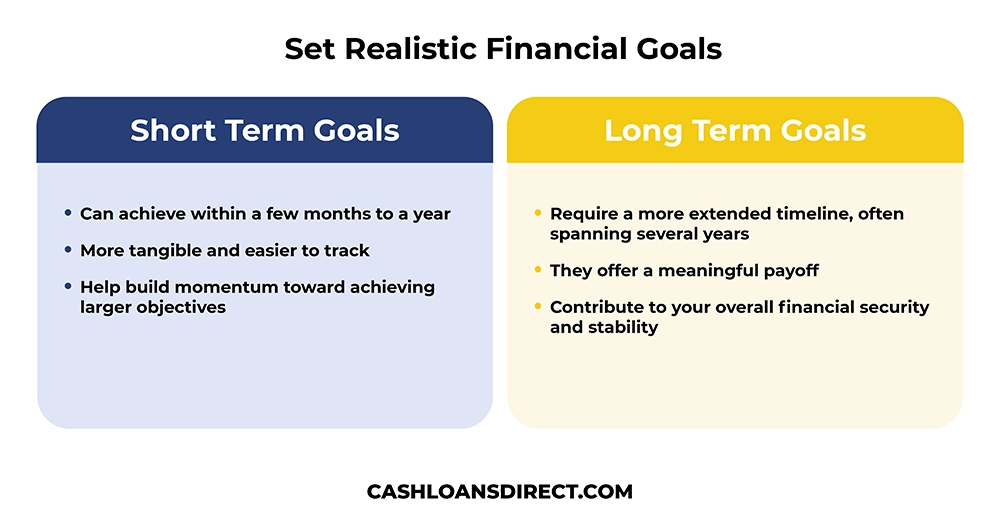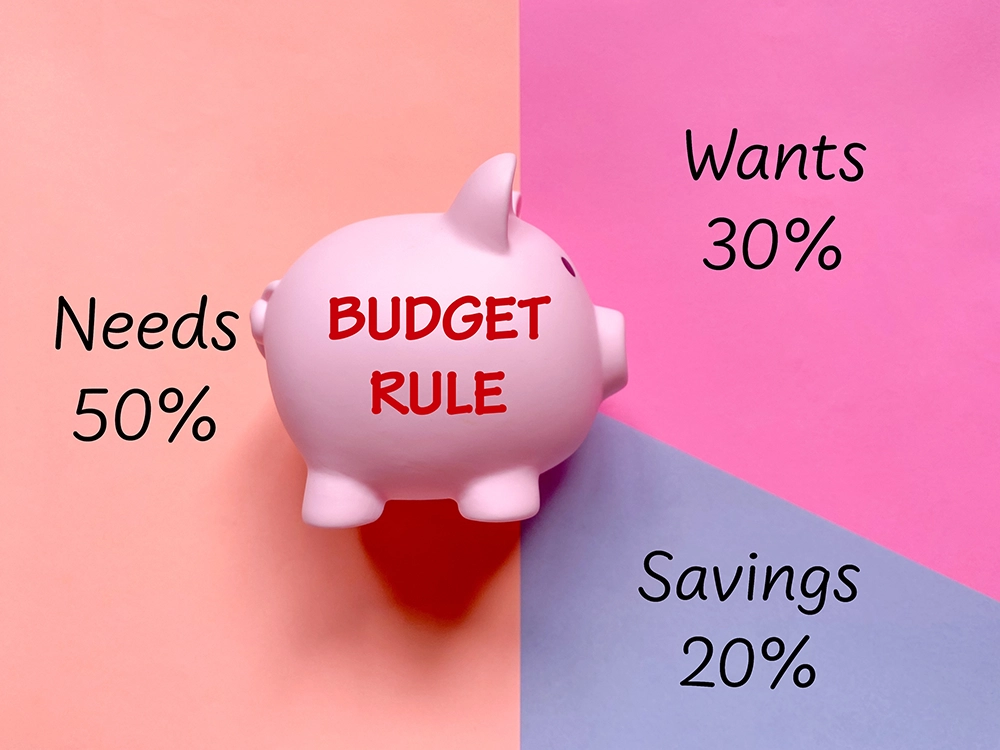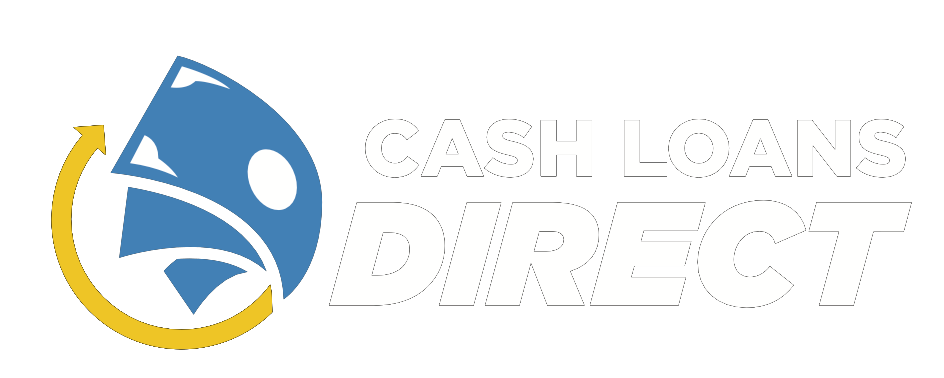california
How to Create a Budget That Works for You
Take control of your finances with a simple, step-by-step guide to building a realistic budget you can actually stick to.

Most people understand the concept of maintaining a budget to make sure that they aren’t overspending on one thing only to leave not enough funds for something else. However, though people understand the need, many either don’t take the time or don’t know how to create a budget that is balanced and will keep them from running out of money.
Consider that about 68% of American consumers agree that a budget would help them reach those personal and family goals. However, about 40% of them have never used a budget. And why is that? We think it’s because they don’t know how to create a simple budget that will work for them.
In this article, the team at Cash Loans Direct will offer some useful tips and suggestions to help you create a budget that will work for you from day one.

To Create a Budget, Start with Your Income and Expenses
To create any kind of budget, no matter what methodology you use, you need to understand how much money you are bringing in, and how much you are pushing out. In a way, it’s like supply and demand. How much money do you have? And how much do you spend?
A good way to do this is to leverage the 50/20/30 budgeting methodology. With this approach, 50% of your take-home income is applied to your needs, 20% to savings, and 30% to your wants. Here are some examples of what fits into each of those categories.
Needs (50% of Your Income)
- Rent or mortgage payments
- Utility bills such as electricity, water, and gas
- Groceries and everyday meals
- Health insurance or medical expenses
- Transportation costs, including car payments, fuel, or public transit
Savings (20% of Your Income)
- Contributions to a savings account or emergency fund
- Retirement fund contributions, like a 401(k) or IRA
- Payments toward reducing debt, such as credit cards or student loans
- Investments that align with your long-term goals
- Setting money aside for planned expenses, like a new car or home repair
Wants (30% of Your Income)
- Dining out at restaurants or ordering takeout
- Entertainment, such as movie tickets, streaming services, or concerts
- Travel and vacations
- Hobbies, classes, or recreational activities
- Upgrading gadgets, home decor, or personal items
Set Realistic Financial Goals
Once you have categorized the expenses in the needs category and have looked at how you are tracking your savings, you can set some financial goals. For most people, financial goals tend to focus on things like contributing more to your long-term savings or saving up for something special like home improvements, a vacation, etc.
But how do you set financial goals? Here are some helpful tips.
Setting Short-Term Financial Goals
Short-term goals are those you can achieve within a few months to a year, making them more immediate and actionable. These might include saving $500 for a weekend getaway in the next three months, building an emergency fund of $1,000 within six months, or paying off a $1,200 credit card balance by contributing $200 per month over six months. Because these goals are more tangible and easier to track, they can provide a sense of accomplishment and help build momentum toward achieving larger objectives.
Setting Long-Term Financial Goals
Long-term goals require a more extended timeline, often spanning several years. These goals typically involve more significant financial milestones, such as saving $10,000 for a down payment on a home within three years by setting aside $280 per month, paying off a $20,000 student loan over five years with $350 monthly contributions, or building a six-month emergency fund of $15,000 within four years by saving $315 each month. While these goals take longer to achieve, they offer a meaningful payoff and contribute to your overall financial security and stability.
Other Budgeting Methods to Consider
Though the 50/20/30 approach to budgeting works for many, we know that you might like to consider other options. Two other popular methods are the envelope system and zero-based budgeting. Here’s how they both work.
Envelope System
The envelope system involves dividing your cash into physical envelopes labeled with spending categories like groceries, entertainment, and transportation. Once the money in an envelope is gone, you stop spending in that category, helping you stick to your budget without overspending.
Cash Loans Direct suggestion: If leveraging the envelope method, be sure to have a safe and secure place to keep your funds. Avoid the temptation to carry large amounts of cash with you and remember that under the mattress is not a good hiding place.
Zero-Based Budgeting
With zero-based budgeting, you allocate every single dollar you make to a specific purpose, such as bills, savings, or discretionary spending, until your total income minus expenses equals zero. This method encourages intentional spending and accountability by giving every dollar a defined role.

Track and Adjust Your Budget Regularly
Whichever budgeting method you choose, be sure to track and adjust regularly. Don’t look at your budget as a set-it-and-forget-it type of mentality. Things change often—costs go up, interest rates can go up or down, salaries and wages can change, and new expenses roll in—so you want to make sure you are prepared when those things happen.
Here are some simple tips to help you keep track of your budget.
- Review your budget monthly to see if your spending aligns with your goals.
- Use budgeting apps or tools to monitor income and expenses easily.
- Track unexpected expenses and adjust your categories accordingly.
- Revisit your financial goals regularly to make sure they still match your priorities.
- Make small adjustments as needed, such as reallocating funds between categories.
- Account for seasonal changes, like holiday spending or increased utility bills.
- Celebrate progress toward your goals to stay motivated and committed.
Cash Loans Direct Offers Loans to Help You Reach Your Financial Goals
No matter where you are at in the budgeting process, sometimes cash can get tight. Perhaps you are stretched too thin between paychecks. Maybe you need to make some home repairs but don’t have the cash on hand. In these cases, loans from Cash Loans Direct can help.
Cash Loans Direct offers payday loans in CA and facilitates installment loans as a credit access business in TX to help you meet your financial commitments and achieve your goals.
In California, Cash Loans Direct is a state-licensed direct lender and provides payday loans to California customers. In Texas, Cash Loans Direct is a state-licensed credit access business (CAB) and maintains a partnership(s) with a third-party direct lender(s) to facilitate safe and secure loans for our customers. Cash Loans Direct is not a lender in the state of Texas. All Loans are made by an unaffiliated third-party lender R-Funding LLC.
Want to know more? Contact us or apply today.
Are you ready to apply?
Click Apply Now to complete our easy online loan application and instantly receive your loan decision.





